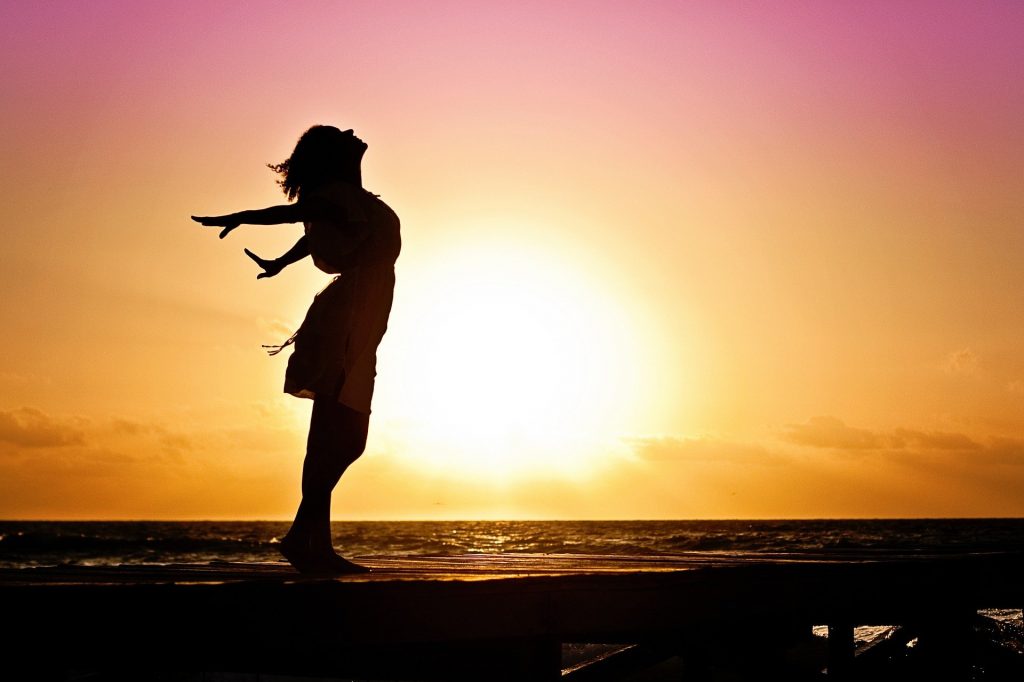Barefoot Your Way to Better Health
Did you know that you can improve your health by spending as little as 30 minutes a day being barefoot? Well, you can. The practice of going barefoot is known as earthing or grounding. More and more research indicates the we receive infusions of energy when our bodies are in contact with the earth surface; sort of electric nutrition.

I enjoy going barefoot. I feel more energized when I do especially when walking on a beach. Usually the first thing I do when I get home is to take my shoes off. I see no reason for wearing shoes in my house unless I have some work to do.
In fact, the body was designed to be used barefoot. Whiles shoes do have benefits, they do interfere with normal gait and biomechanics of the foot.
Here is a quote from Dr. William Rossi in Podiatry Management from 1999. Natural gait is bio-mechanically impossible for any shoe-wearing person. It took 4 million years to develop our unique human foot and our consequent distinctive form of gait, a remarkable feat of bioengineering. Yet, in only a few thousand years, with one carelessly designed instrument, our shoes, we have warped the pure anatomical form of human gait: obstructing is engineering efficiency, afflicting it with strains and stresses and denying its natural grace form and ease of movement head to foot.
If you ask a little kid to run as fast as he or she can, many times, they instinctively take their shoes off to do that. Barefoot is our natural state. Why should go barefoot, at least some of the time?
The earth is full of electromagnetic fields and our feet are our means to ground or connect with these electromagnetic fields. Wearing shoes (not all) blunt the benefits we can obtain from the earth’s force fields. You are a bioelectrical being and the earth is an electric planet.
just came I thinkThe earth is negatively charged and when you go barefoot (or ground or earth) you are connecting your body to the negative charges supplied by the Earth’s surface. Since the earth has more negative charge than your body, you end up in absorbing electrons from the surface. These electrons neutralize free radicals in our body. These free radicals can lead to inflammation and tissue damage causing disease. Here is an article ours on the free radical theory of aging.
Health Benefits of Earthing
There are several health benefits to earthing going barefoot. These include:
- boosting the immune system
- reduce inflammation
- reduce stress hormones
- improve blood pressure
- reduce viscosity of the blood reducing chance of blood clots
- improved sleep
- enhanced moods
- improved pain management
A major benefit of earthing is that is reduces viscosity of the blood. This reduces the chances of the blood clotting. Earthing during sleep (you can get special mattresses and pillows to earth) normalizes cortisol levels and improves sleep. Cortisol is the stress hormone. Earthing modifies the autonomic nervous system to better control blood pressure, body temperature, and hormone secretion. Earthing reduces the inflammatory response through the transfer of negatively-charged electrons.
Where Can You Ground?
You can ground or earth almost anywhere. All of the following are acceptable earthing surfaces:
- Grass, sand, dirt, and soil
- Unsealed concrete
- Plants and living trees
- Grave and rock
- Unsealed brick
- Bodies of water (oceans, lakes, and streams)
What about shoes and socks?
Shoes/sandals with leather or hide soles will conduct earth’s electrons but shoes with rubber or plastics soles will not. Cotton socks and nylons will conduct earth’s electrons but not as well as barefeet.
Surfaces that are not grounded include: wood and vinyl floors, glazed tiles.
There earthing products you can purchase that provide the same benefits that natural grounding provides. Such products include earthing mattress covers, earthing mat, patches you apply to your body, pillow cases, etc. Check out Earthing.com for more information.
Do’s and Don’ts for Earthing
How do you barefoot your way to better health? Take your shoes off and have both feet on the ground for 30 minutes. You can sit, stand, or walk.
Here are some does and don’ts.
- Walking on grass that is slightly wet is more effective than walking on dry grass. Walking on the beach were the the sand is wet is effective.
- Walk in safe areas free of debris. and yeah will workBe aware of rock, glass and other sharp objects that can cut your foot. If you have diabetes discuss first going barefoot with your physician or podiatrist. They may advise against it due to risk of infection from trauma to foot from sharp objects.
- to not go barefoot if you have any open cuts or sores on the soles of your feet.
- Be sure to wash your feet with soap and water after grounding.
- Consider earthing after flying. Air travel adversely affects our bodies biological rhythms.
- You cannot earth or ground on asphalt, vinyl, and wood surfaces which are nonconductive materials.
Other Research Studies on Earthing.
- Earthing: health implications of reconnecting the human body to the earth’s surface electrons.
- Electric Nutrition: the surprising health and healing benefits of biological grounding (earthing).
- The effects of grounding (earthing) on inflammation, the immune response, wound healing, and prevention and treatment of chronic inflammatory and autoimmune diseases.
- The effects of grounding (earthing) on bodyworkers pain and overall quality of life: a randomized controlled trial
Get back to nature. Get in contact with the earth.
